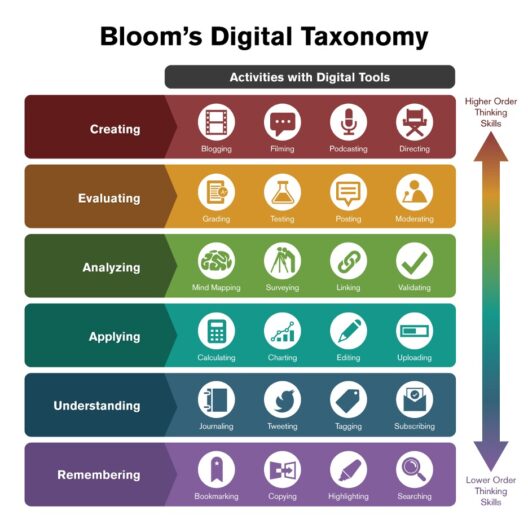
Creative Assessments: You Can Do It!
Christine Moore is an Instructional Designer at EdPlus.
Creative assessments (CAs) go beyond traditional quizzes and essays and allow students to demonstrate their knowledge in a way that is important to them, relevant to modern courses of study, and prepares students for problem solving outside of academic life.
While using CAs is trending, implementing them can be overwhelming, time-consuming, and sometimes confusing (source: 2021 ASU ID Survey on Creative Assessments).
This article will discuss reported challenges that may keep faculty from implementing CAs, and our Instructional Designers’ recommendations to overcome these common barriers.
Challenge #1: I don’t know where to start.
Tip: Let the Course Learning Objectives guide this decision.
The most appropriate place for developing a CA is in the course learning objectives (CLOs). The CLOs reflect the overarching outcomes that students should strive for in your course. They provide ample hints to which creative assessment would be appropriate for the content and support alignment of activities.
Bloom’s Digital Taxonomy is an excellent starting point for creating online learning activities that are connected to your CLOs. Use this chart (inserted below) to explore digital formats and assessment types based on the outcomes expected for your course.

Challenge #2: The process is overwhelming.
Tip: Start with an assessment you already use or are familiar with.
CA development should take into account your abilities and comfort level. There is no need to drastically change course or start from scratch. CAs can be iterative, adding elements each time the course is taught and build on your own knowledge and skills in a manageable way.
Example: If your current assessment is an essay:
- Iteration #1: Turn the essay into an individual news article.
- Iteration #2: Have students create a newsletter, adding in articles from their classmates that create a well-rounded information source.
- Iteration #3: A class newspaper that allows students to place their work under the appropriate headings, include editorials, op-eds, and peer reviews.
Each time the course is taught, the instructor can adjust the instructions, implement student feedback and explore new technologies used.
*Note: It is perfectly acceptable to just start and try something new. Be upfront with your students and ask for feedback that can only assist you in perfecting the assessment going forward.
As always, your ID can assist in developing a CA that works for your course.
Challenge #3: It takes too much time.
Tip: Let students do the work.
A successful approach to reducing mental overload and time-consuming detail development is to reduce the amount of direction provided by the instructor. Freedom to create is where students’ higher order thinking skills are exercised!
Instructors can provide the overall expectations of the product, establish the learning objectives, and provide a rubric. From there, let the students create the product details based on their knowledge of the content and the rubric expectations.
Instructors provide: general guidelines for the thought or development process, and a rubric with specific learning objectives.
Students determine: the technology or tool used, an organization method or format based on what they think fits the content and meets the objectives.
Example
LOs: Identify and describe elements of Classical English writing styles, locate resources for finding historical examples of Classical English writing styles, discuss and share personal perspectives on Classical English samples
Instructions: Develop a digital tool of your choice to share knowledge about Classical English writing styles. Examples include, but are not limited to an app, social media platform, wiki, etc.
- Users of the tool should be able to identify and describe elements of Classical English writing styles
- Users of the tool should be able to locate resources for finding historical examples of Classical English writing styles
- Users of the platform should discuss Classical English samples just by interacting with the platform.
Develop at least six original posts or resources that initial users can follow as examples for use or for contributing more content.
Use your knowledge of Classical English writing to design the look, format, contents, etc.
This should be submitted as a highly developed proof-of-concept storyboard or infographic, or with a technology-based tool, anything from Google Docs to an app.
Rubric:
- Tool is organized in a way that allows for the sharing and discussion of resources.
- Tool contains at least one element that provides basic knowledge of Classical English writing styles and includes student-created examples
- The design, look, format, contents etc reflects Classical English writing.
- Tool contains 6 student-created examples of content.
- Submitted product contains highly developed elements (storyboard, proof of concept, etc) that show effort and application of the instructions.
Conclusion
Be sure to follow ASU Online Eventbrite page for more resources and webinars on creative assessments. If you have more questions about developing a new creative assessment in your course, please reach out to your Instructional Designer.
Leave a Comment
Your email address will not be published. Required fields are marked *